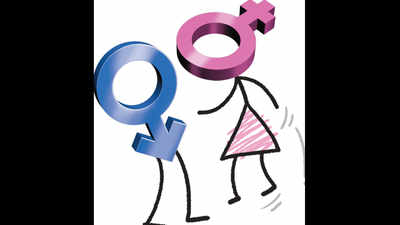- News
- City News
- ahmedabad News
- Gujarat among dubious three states in sex ratio
Trending
This story is from August 19, 2019
Gujarat among dubious three states in sex ratio
Since the first census after Independence, Gujarat hasn't fared as poorly in sex ratio as in 2011. In the first census held in independent India in 1951, Gujarat's sex ratio stood at 952 females per 1,000 males which has dropped by 3.46% to just 919 in 2011.

Picture for representational purpose only.
AHMEDABAD: Since the first census after Independence, Gujarat hasn't fared as poorly in sex ratio as in 2011. In the first census held in independent India in 1951, Gujarat's sex ratio stood at 952 females per 1,000 males which has dropped by 3.46% to just 919 in 2011.
Gujarat, which is reeling under a skewed child sex ratio of 890 girls in 0-6 age group per 1,000 boys, however, is reported to have hit a new low.As per the Registrar General of India's report titled "Year-wise State-wise Sex Ratio in Post-Independent India", Gujarat is among only three states in the country to have registered a deficit in the percentage improvement in overall sex ratio between census years 2001 and 2011. The other two states are Bihar and Jammu & Kashmir.

The sex ratio in Gujarat in 2011 as compared to 2001 saw a drop of 0.08%. The other two states that have registered a drop are Bihar (0.12%) and J&K (0.39%). The overall sex ratio has been extremely skewed in Gujarat especially since 1992. The state had 942 women per 1,000 men in 1981. This slipped to 920 in just three decades. Between 1991 and 2001, the ratio plummeted from 934 to 920.
Gaurang Jani, a sociologist in Gujarat University, claimed that the drop in the overall sex ratio is directly linked to a drop in the girl child sex ratio in Gujarat. "After 1960, the state's sex ratio has been on the decline. Despite a lot of noise, child sex ratio improved by only 7 points from 883 in 2001 to 890 in 2011," said Jani. He added, "Gender inequality in the state has played a major role in this skewed ratio. A mass movement, instead of caste-centric efforts to curb female infanticide is the need of the hour."
Jani opined that government and social organisation should collaborate more often on drives to curb this social menace.
Gujarat, which is reeling under a skewed child sex ratio of 890 girls in 0-6 age group per 1,000 boys, however, is reported to have hit a new low.As per the Registrar General of India's report titled "Year-wise State-wise Sex Ratio in Post-Independent India", Gujarat is among only three states in the country to have registered a deficit in the percentage improvement in overall sex ratio between census years 2001 and 2011. The other two states are Bihar and Jammu & Kashmir.

The sex ratio in Gujarat in 2011 as compared to 2001 saw a drop of 0.08%. The other two states that have registered a drop are Bihar (0.12%) and J&K (0.39%). The overall sex ratio has been extremely skewed in Gujarat especially since 1992. The state had 942 women per 1,000 men in 1981. This slipped to 920 in just three decades. Between 1991 and 2001, the ratio plummeted from 934 to 920.
According to the nation-level report, the overall sex ratio in India has shown an increase in both rural and urban areas. From 945 women for 1,000 men in 2001 to 947 in 2011 in rural areas, the sex ratio had increased from 900 in 2001 to 926 in 2011 in urban areas.
Gaurang Jani, a sociologist in Gujarat University, claimed that the drop in the overall sex ratio is directly linked to a drop in the girl child sex ratio in Gujarat. "After 1960, the state's sex ratio has been on the decline. Despite a lot of noise, child sex ratio improved by only 7 points from 883 in 2001 to 890 in 2011," said Jani. He added, "Gender inequality in the state has played a major role in this skewed ratio. A mass movement, instead of caste-centric efforts to curb female infanticide is the need of the hour."
Jani opined that government and social organisation should collaborate more often on drives to curb this social menace.
End of Article
FOLLOW US ON SOCIAL MEDIA










